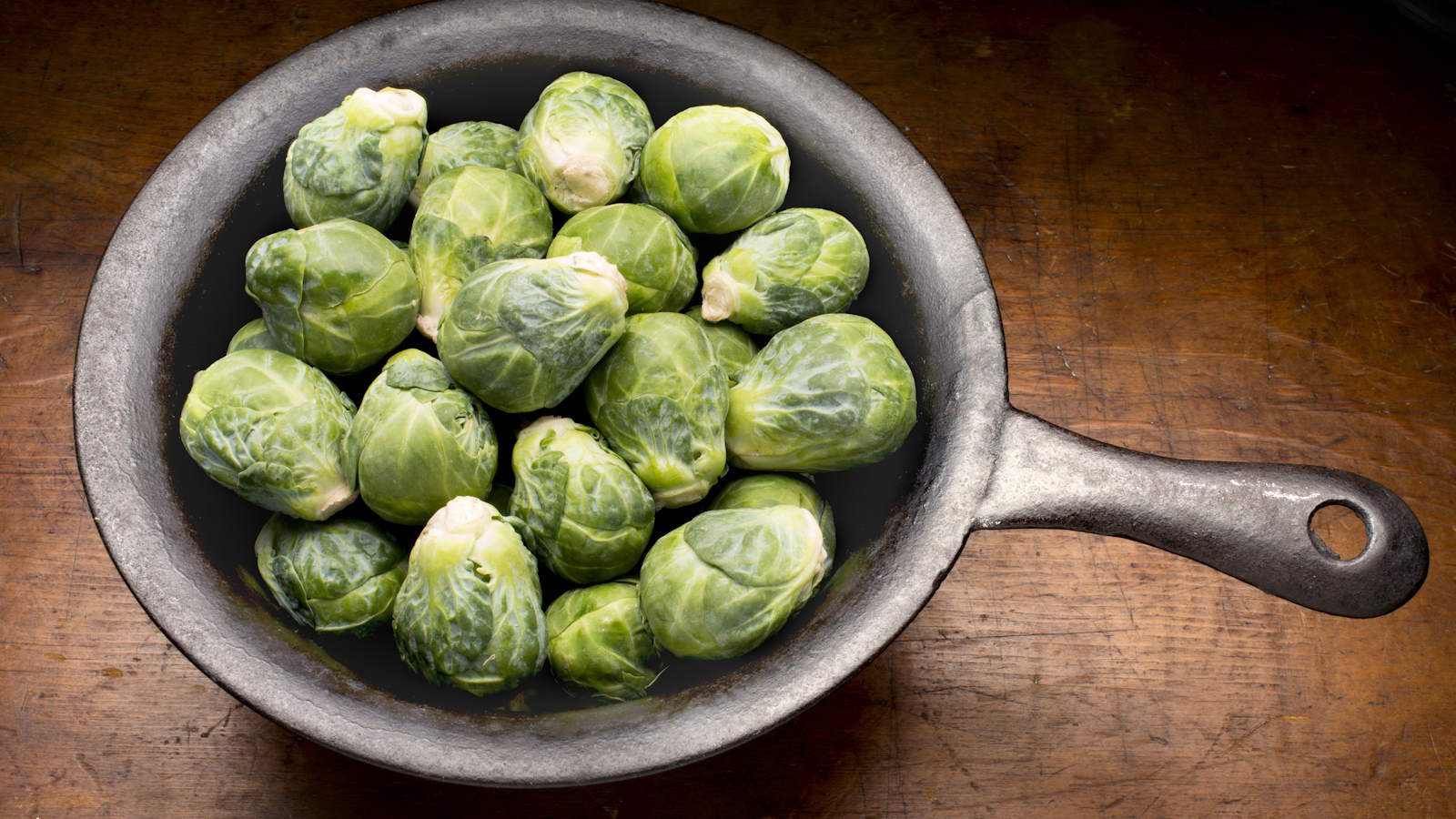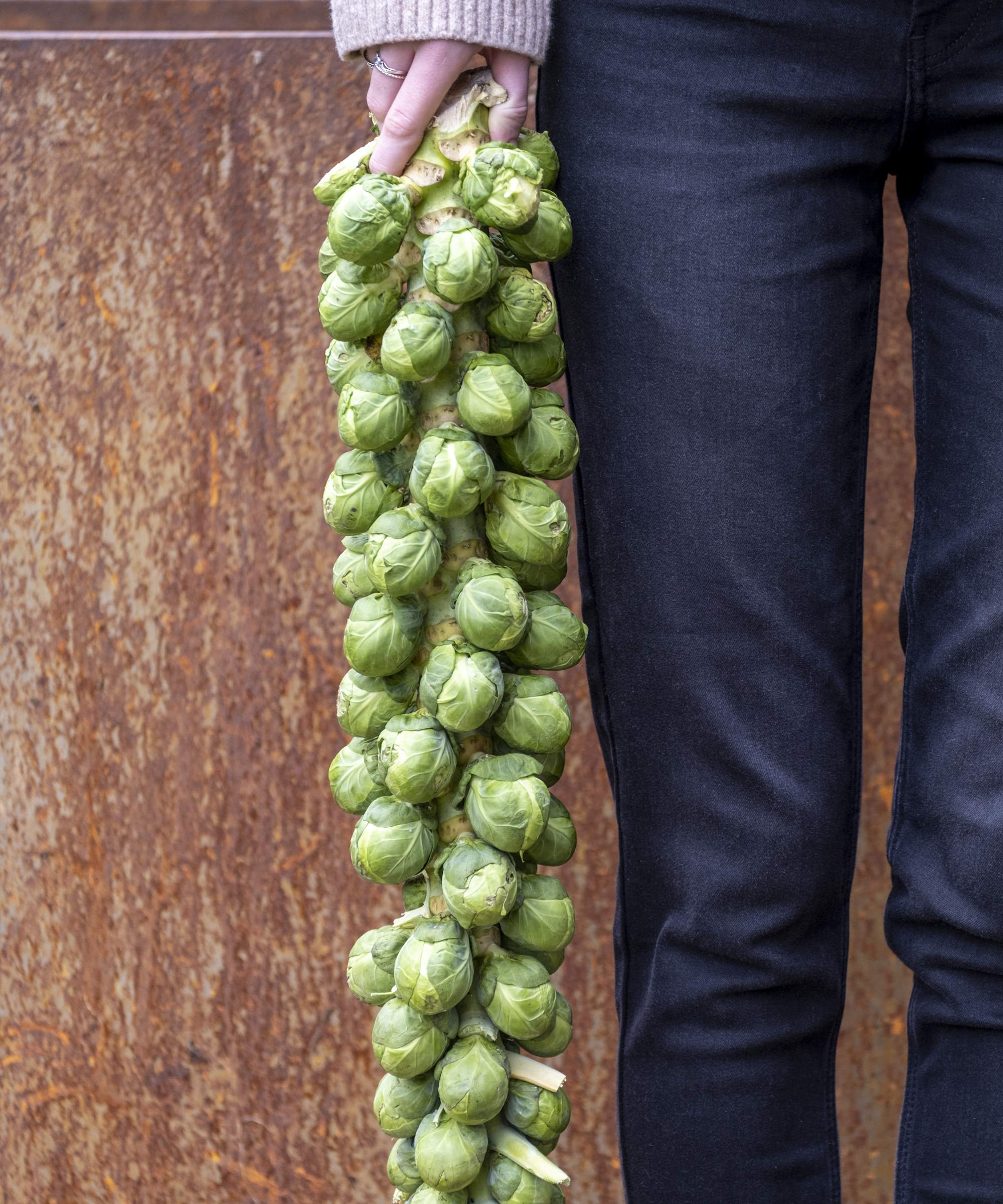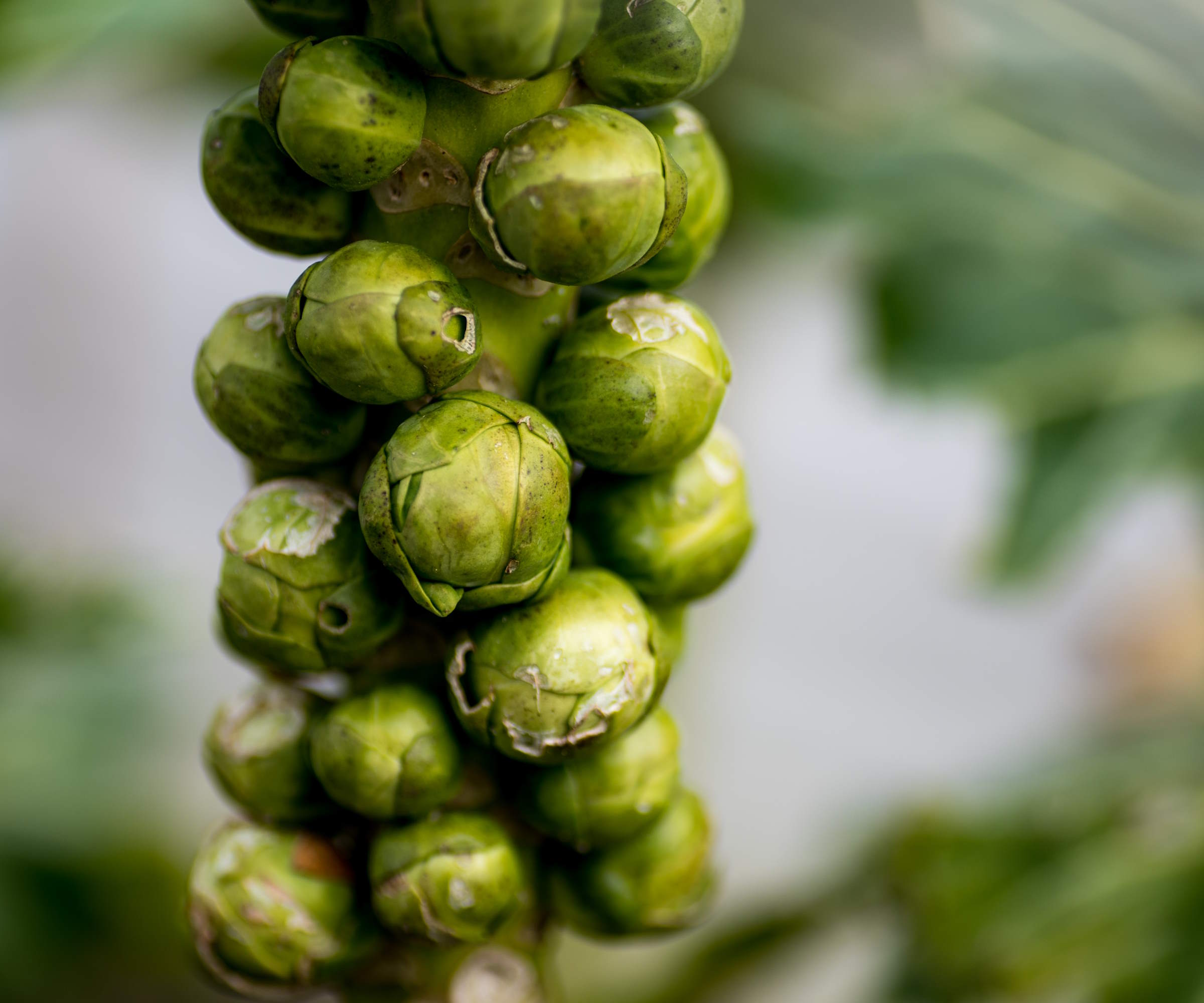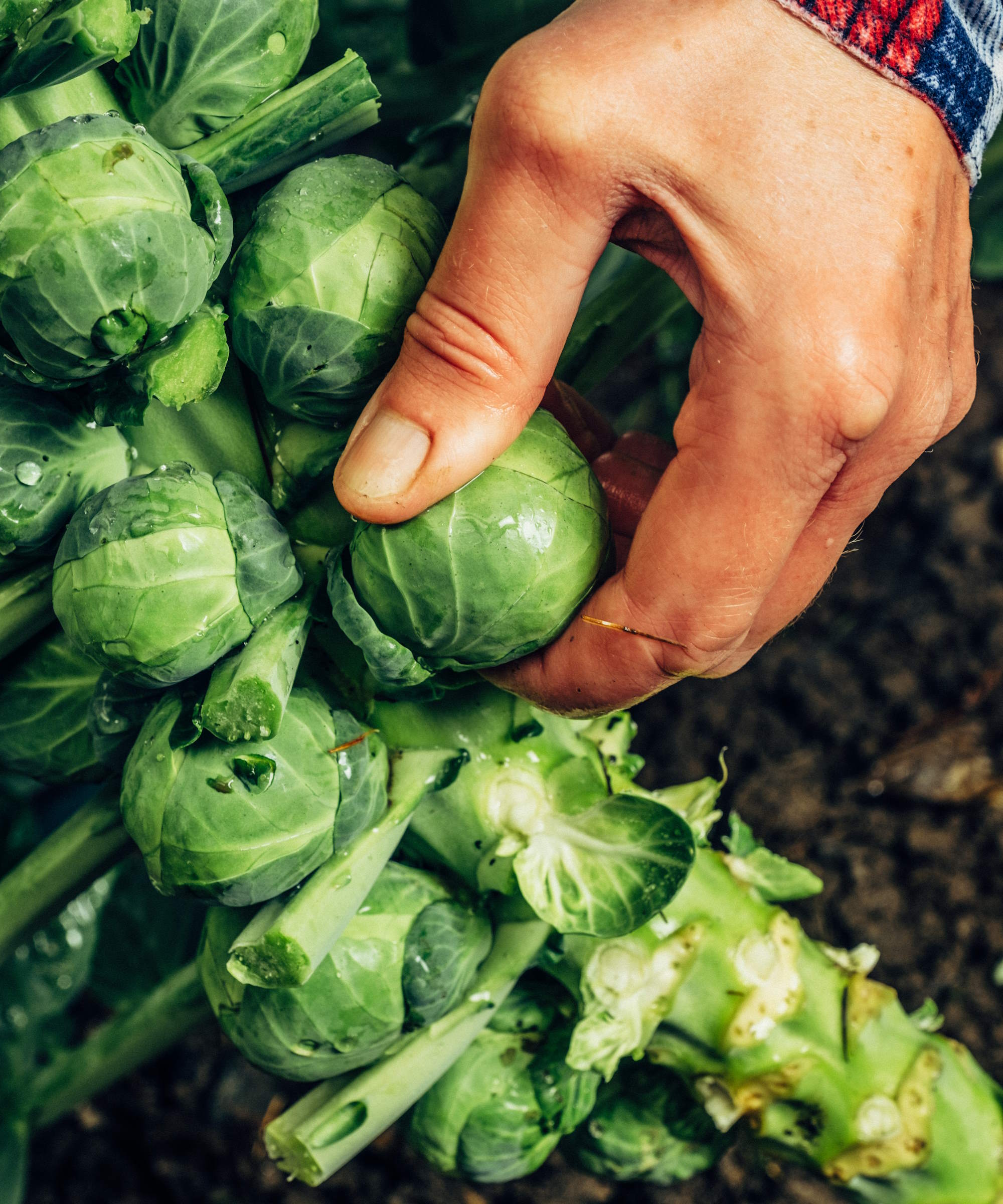
Brussels sprouts are traditionally harvested throughout winter and are a mainstay on many people’s Christmas dinner table. The plants have a long growing season, sown or planted in spring to grow throughout summer ready to be harvested from fall onwards, depending on the variety.
There are two ways to harvest Brussels sprouts: you can pick individual sprouts or cut the entire stalk at once. I have grown Brussels sprouts for many years and harvested the vegetables to be used by chefs and sold to the public. I've tried both harvesting methods, and each has its advantages.
If you are growing brussels sprouts, this time to harvest the vegetables is when they are fully ripe and firm. This involves regularly inspecting the plants to make sure you are picking the sprouts when they are at their peak. Overripe sprouts left on the stalk too long will start to open up, turn yellow, and develop a more bitter taste.

How to know Brussels sprouts are ready to pick?
Early varieties of brussels sprouts are ready to harvest from early fall onwards. If you have planned your vegetable garden for successive harvests, you can have a long cropping season by growing both early and later types of sprouts - which are ready to harvest come November and December. You can see a range of early and late varieties of Brussels sprouts seeds to grow at Burpee.
Top tip: there are actually benefits to holding off harvesting until after the plants have been touched by a few frosts, as frosts make the sprouts taste sweeter.
The sprouts can start to be picked once they are large enough to use. They should be firm to the touch and at least an inch in diameter. Make sure to pick them before the sprouts start to open.

How to harvest Brussels sprouts
Brussels sprouts can be harvested in two different ways, by regularly picking sprouts from the stalk throughout the harvesting period as required, or taking the entire stalk in one go. The method you use will likely depend on how many sprouts you need and how long you want them to store for.
Harvest by removing individual sprouts
Harvesting individual Brussels sprouts from the stalk is the most common way that home gardeners pick the crop in their kitchen garden. It is a fantastic way to harvest Brussel sprouts to ensure the plant keeps growing.
As Brussels sprouts all ripen at different times, even on the same stalk, it is important to check the plants regularly and pick them as they reach peak ripeness.
Sprouts will ripen from the base of the plant upwards, so start harvesting at the bottom and work your way up, removing any yellow leaves as you go. Picking lower sprouts and removing leaves will focus the plant’s energy into developing the sprouts further up the stalk.
This method of harvesting Brussels sprouts is a very simple one. You can either carefully twist or snap off the sprouts from the stalk using your fingers, or cut them from the stalk at the base using a sharp and clean knife. You can use a harvesting knife, such as the Fiskars Harvesting Knife available at Amazon.
I harvested in this manner when I was picking Brussels sprouts regularly for chefs at high-level restaurants. This was the best way as harvesting was taking place two or three times a week. It meant we picked the perfect sprouts at each moment and gave time for others to develop over the coming weeks.

Harvest by cutting the whole stalk
The alternative to harvesting individual sprouts is to cut the entire stalk. This can be beneficial if you have a large crop of sprouts that have all developed, or you need lots at one time. Some more modern varieties of sprouts also now mature in a more consistent way, so can be good candidates for harvesting in this manner.
Simply take a pair of clean and sharp garden tools - a pair of good garden loppers (available at Amazon) would be best for this task - and cut the whole stalk down at just above ground level. Or you can carefully grab the stalk and pull the entire plant out of the ground, before cutting the roots and top off.
The sprouts can either be removed from the stem, with ones that have blown or turned yellow being discarded, or stored attached to the stalk. Sprouts stored on the stalk will be able to be kept in a refrigerator for two or three weeks, compared to only around one week for sprouts that have been picked from the stem.
I harvested entire stalks of sprouts when I was selling the crop to visitors in a public garden I worked in. This method was preferred as it was easier for people to take away whole stems, and it guaranteed them a longer shelf life when they got the produce home.
FAQs
How long can you leave Brussels sprouts in the garden?
Brussels sprouts are capable of producing harvests over the course of a few months. They can stand out in the vegetable garden throughout winter and into spring. Keep picking sprouts off the stalk until the entire stem has been cleared. The stalk is often chopped into small bits and used to make compost. It is actually edible, though does require a long period of cooking.
Can you eat the leaves off of a Brussels sprout plant?
The top leaves of the plant are edible and are often cooked in a similar way to cabbage. The leafy growth at the top of the plant is often sold as ‘sprout tops’ and regarded as a delicacy. It has become increasingly popular again in recent years with chefs, and you see the tops sold in stores more nowadays. The leaves are highly nutritious and as tasty as the sprouts themselves, though with a milder taste.
When growing brassicas in the vegetable garden, including the likes of Brussels sprouts, kale, cabbages, or cauliflower, it is recommended to have a crop rotation strategy. By rotating crops you can prevent the build-up of diseases in the soil and benefit the fertility of any soil types.







